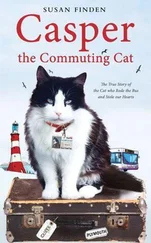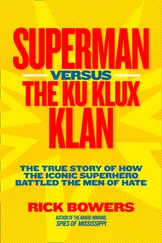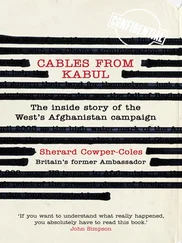Andrew Sorkin - Too Big to Fail - The Inside Story of How Wall Street and Washington Fought to Save the FinancialSystem--and Themselves
Здесь есть возможность читать онлайн «Andrew Sorkin - Too Big to Fail - The Inside Story of How Wall Street and Washington Fought to Save the FinancialSystem--and Themselves» весь текст электронной книги совершенно бесплатно (целиком полную версию без сокращений). В некоторых случаях можно слушать аудио, скачать через торрент в формате fb2 и присутствует краткое содержание. Жанр: Старинная литература, на английском языке. Описание произведения, (предисловие) а так же отзывы посетителей доступны на портале библиотеки ЛибКат.
- Название:Too Big to Fail: The Inside Story of How Wall Street and Washington Fought to Save the FinancialSystem--and Themselves
- Автор:
- Жанр:
- Год:неизвестен
- ISBN:нет данных
- Рейтинг книги:4 / 5. Голосов: 1
-
Избранное:Добавить в избранное
- Отзывы:
-
Ваша оценка:
- 80
- 1
- 2
- 3
- 4
- 5
Too Big to Fail: The Inside Story of How Wall Street and Washington Fought to Save the FinancialSystem--and Themselves: краткое содержание, описание и аннотация
Предлагаем к чтению аннотацию, описание, краткое содержание или предисловие (зависит от того, что написал сам автор книги «Too Big to Fail: The Inside Story of How Wall Street and Washington Fought to Save the FinancialSystem--and Themselves»). Если вы не нашли необходимую информацию о книге — напишите в комментариях, мы постараемся отыскать её.
Too Big to Fail: The Inside Story of How Wall Street and Washington Fought to Save the FinancialSystem--and Themselves — читать онлайн бесплатно полную книгу (весь текст) целиком
Ниже представлен текст книги, разбитый по страницам. Система сохранения места последней прочитанной страницы, позволяет с удобством читать онлайн бесплатно книгу «Too Big to Fail: The Inside Story of How Wall Street and Washington Fought to Save the FinancialSystem--and Themselves», без необходимости каждый раз заново искать на чём Вы остановились. Поставьте закладку, и сможете в любой момент перейти на страницу, на которой закончили чтение.
Интервал:
Закладка:
Geithner did have his supporters, but they tended to be people who already had reason to be familiar with the financial industry’s perilous state. Richard Fisher, Geithner’s counterpart at the Dallas Fed, had sent him an e-mail: “Illegitimi non carborundum—Don’t let the bastards get you down.”
Much as he would have liked to, Geithner had no intention of announcing to the U.S. Senate that he had been surprised by the crisis. From his office atop the stone fortress that is the Federal Reserve Bank of New York, Geithner had for years warned that the explosive growth in credit derivatives—various forms of insurance that investors could buy to protect themselves against the default of a trading partner—could actually make them ultimately more vulnerable, not less, because of the potential for a domino effect of defaults. The boom on Wall Street could not last, he repeatedly insisted, and the necessary precautions should be taken. He had stressed these ideas time and again in speeches he had delivered, but had anyone listened? The truth was, no one outside the financial world was particularly concerned with what the president of the New York Fed had to say. It was all Greenspan, Greenspan, Greenspan before it became Bernanke, Bernanke, Bernanke.
Standing at the airport, Geithner certainly felt deflated, but for now it was mostly because his driver hadn’t appeared. “You want to just take a taxi?” Mitchell asked.
Geithner, arguably the second most powerful central banker in the nation after Bernanke, stepped into the twenty-person-deep taxi line.
Patting his pockets, he looked sheepishly at Mitchell. “Do you have cash on you?”

If Tim Geithner’s life had taken just a slightly different turn only months earlier, he might well have been CEO of Citigroup, rather than its regulator.
On November 6, 2007, as the credit crisis was first beginning to hit, Sanford “Sandy” Weill, the architect of the Citigroup empire and one of its biggest individual shareholders, scheduled a 3:30 p.m. call with Geithner. Two days earlier, after announcing a record loss, Citi’s CEO, Charles O. Prince III, had been forced to resign. Weill, an old-school glad-hander who had famously recognized and cultivated the raw talent of a young Jamie Dimon, wanted to talk to Geithner about bringing him on board: “What would you think of running Citi?” Weill asked.
Geithner, four years into his tenure at the New York Federal Reserve, was intrigued but immediately sensitive to the appearance of a conflict of interest. “I’m not the right choice,” he said almost reflexively.
For the following week, however, the prospect was practically all he could think about—the job, the money, the responsibilities. He talked it over with his wife, Carole, and pondered the offer as he walked their dog, Adobe, around Larchmont, a wealthy suburb about an hour from New York City. They already lived a comfortable life—he was making $398,200 a year, an enormous sum for a regulator—but compared with their neighbors along Maple Hill Drive, they were decidedly middle-of-the-pack. His tastes weren’t that expensive, save for his monthly $80 haircut at Gjoko Spa & Salon, but with college coming up for his daughter, Elise, a junior in high school, and his son, Benjamin, an eighth-grader behind her, he could certainly use the money.
He finally placed a call to his old pal Robert Rubin, the former Treasury secretary and Citigroup’s lead director, to make sure he hadn’t made a mistake. Rubin, a longtime Geithner mentor, politely told him that he was backing Vikram Pandit for the position and encouraged him to stay in his current job. But the fact that he had been considered for a post of this magnitude was an important measure of Geithner’s newly earned prominence in the financial-world firmament and a reflection of the trust he had earned within it.
For much of his time at the Fed, he had detected a certain lack of respect from Wall Street. Part of the problem was that he was not out of the central banker mold with which financial types traditionally felt comfortable. In the ninety-five-year history of the Federal Reserve, eight men had served as president of the Federal Reserve Bank of New York—and every one of them had worked on Wall Street as either a banker, a lawyer, or an economist. Geithner, in contrast, had been a career Treasury technocrat, a protégé of former secretaries Lawrence Summers and Robert Rubin. His authority was also somewhat compromised by the fact that, at forty-six, he still looked like a teenager and was known to enjoy an occasional day of snowboarding—and that he was given to punctuating his sentences with “fuck.”
Some Washington officials, journalists, and even a few bankers were charmed by Geithner, whose wiry intensity and dry, self-deprecating wit helped create the image of him as something of a policy-making savant: Although he often appeared distracted and inattentive during meetings, he would, after everyone had said his piece, give a penetrating analysis of the entire discussion, in coherent, flowing paragraphs.
Others, however, regarded these performances as what they saw as a form of controlling shtick. Every month the New York Fed would host a lunch for Wall Street chieftains, the very people his office oversaw, and every month Geithner would slouch in his seat, shuffling his feet, sipping a Diet Coke, and saying precisely nothing. He was as Delphic as Greenspan, one of his heroes, but he didn’t have the gravitas to pull it off, certainly not to an audience of major Wall Street players.

“He’s twelve years old!”
Such was the reaction of a nonplussed Peter G. Peterson, the former Lehman Brothers chief executive and co-founder of the private-equity firm Blackstone Group, upon first meeting Geithner in January 2003. Peterson had been leading the search for a replacement for William McDonough, who was retiring after a decade at the helm of the New York Fed. McDonough, a prepossessing former banker with First National Bank of Chicago, had become best known for summoning the chief executives of fourteen investment and commercial banks in September 1998 to arrange a $3.65 billion private-sector bailout of the imploding hedge fund Long-Term Capital Management.
Peterson had been having trouble with the search; none of his top choices was interested. Making his way down the candidates list, he came upon the unfamiliar name of Timothy Geithner and arranged to see him. At the interview, however, he was put off by Geithner’s soft-spokenness, which can border on mumbling, as well as by his slight, youthful appearance.
Larry Summers, who had recommended Geithner, tried to assuage Peterson’s concerns. He told him that Geithner was much tougher than he appeared and “was the only person who ever worked with me who’d walk into my office and say to me, ‘Larry, on this one, you’re full of shit.’”
That directness was the product of a childhood spent constantly adapting to new people and new circumstances. Geithner had had an army brat childhood, moving from country to country as his father, Peter Geithner, a specialist in international development, took on a series of wide-ranging assignments, first for the United States Agency for International Development and then for the Ford Foundation. By the time Tim was in high school, he had lived in Rhodesia (now Zimbabwe), India, and Thailand. The Geithner family was steeped in public service. His mother’s father, Charles Moore, was a speechwriter and adviser to President Eisenhower, while his uncle, Jonathan Moore, worked in the State Department.
Читать дальшеИнтервал:
Закладка:
Похожие книги на «Too Big to Fail: The Inside Story of How Wall Street and Washington Fought to Save the FinancialSystem--and Themselves»
Представляем Вашему вниманию похожие книги на «Too Big to Fail: The Inside Story of How Wall Street and Washington Fought to Save the FinancialSystem--and Themselves» списком для выбора. Мы отобрали схожую по названию и смыслу литературу в надежде предоставить читателям больше вариантов отыскать новые, интересные, ещё непрочитанные произведения.
Обсуждение, отзывы о книге «Too Big to Fail: The Inside Story of How Wall Street and Washington Fought to Save the FinancialSystem--and Themselves» и просто собственные мнения читателей. Оставьте ваши комментарии, напишите, что Вы думаете о произведении, его смысле или главных героях. Укажите что конкретно понравилось, а что нет, и почему Вы так считаете.












